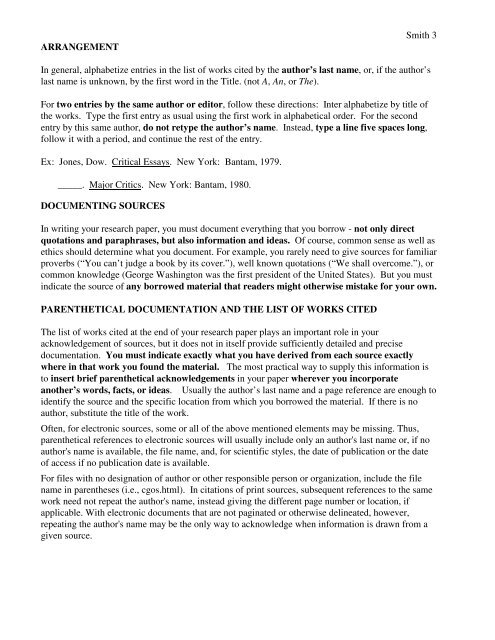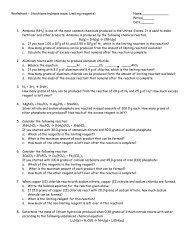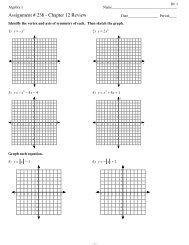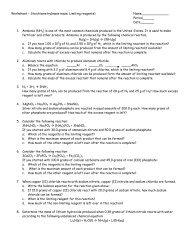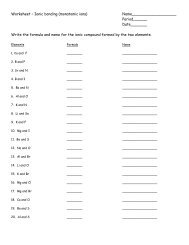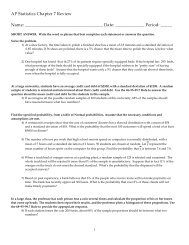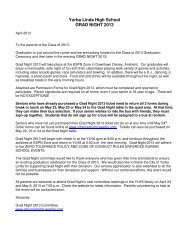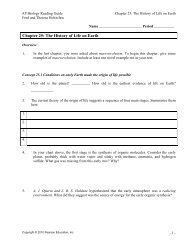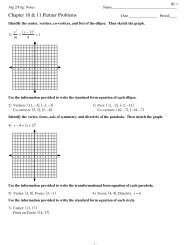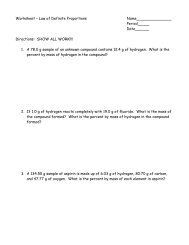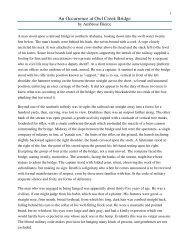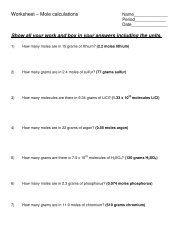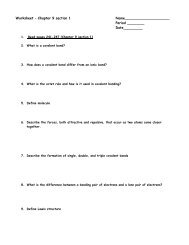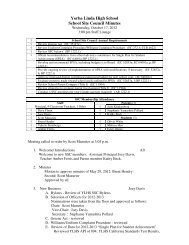YLHS Essay/Research Paper Style Guide
YLHS Essay/Research Paper Style Guide
YLHS Essay/Research Paper Style Guide
You also want an ePaper? Increase the reach of your titles
YUMPU automatically turns print PDFs into web optimized ePapers that Google loves.
ARRANGEMENT<br />
Smith 3<br />
In general, alphabetize entries in the list of works cited by the author’s last name, or, if the author’s<br />
last name is unknown, by the first word in the Title. (not A, An, or The).<br />
For two entries by the same author or editor, follow these directions: Inter alphabetize by title of<br />
the works. Type the first entry as usual using the first work in alphabetical order. For the second<br />
entry by this same author, do not retype the author’s name. Instead, type a line five spaces long,<br />
follow it with a period, and continue the rest of the entry.<br />
Ex: Jones, Dow. Critical <strong>Essay</strong>s. New York: Bantam, 1979.<br />
_____. Major Critics. New York: Bantam, 1980.<br />
DOCUMENTING SOURCES<br />
In writing your research paper, you must document everything that you borrow - not only direct<br />
quotations and paraphrases, but also information and ideas. Of course, common sense as well as<br />
ethics should determine what you document. For example, you rarely need to give sources for familiar<br />
proverbs (“You can’t judge a book by its cover.”), well known quotations (“We shall overcome.”), or<br />
common knowledge (George Washington was the first president of the United States). But you must<br />
indicate the source of any borrowed material that readers might otherwise mistake for your own.<br />
PARENTHETICAL DOCUMENTATION AND THE LIST OF WORKS CITED<br />
The list of works cited at the end of your research paper plays an important role in your<br />
acknowledgement of sources, but it does not in itself provide sufficiently detailed and precise<br />
documentation. You must indicate exactly what you have derived from each source exactly<br />
where in that work you found the material. The most practical way to supply this information is<br />
to insert brief parenthetical acknowledgements in your paper wherever you incorporate<br />
another’s words, facts, or ideas. Usually the author’s last name and a page reference are enough to<br />
identify the source and the specific location from which you borrowed the material. If there is no<br />
author, substitute the title of the work.<br />
Often, for electronic sources, some or all of the above mentioned elements may be missing. Thus,<br />
parenthetical references to electronic sources will usually include only an author's last name or, if no<br />
author's name is available, the file name, and, for scientific styles, the date of publication or the date<br />
of access if no publication date is available.<br />
For files with no designation of author or other responsible person or organization, include the file<br />
name in parentheses (i.e., cgos.html). In citations of print sources, subsequent references to the same<br />
work need not repeat the author's name, instead giving the different page number or location, if<br />
applicable. With electronic documents that are not paginated or otherwise delineated, however,<br />
repeating the author's name may be the only way to acknowledge when information is drawn from a<br />
given source.


